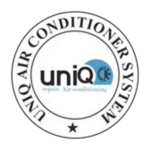Mini-Split AC Repair: Keeping Your Cool Comfortably
Mini-split air conditioning systems have become increasingly popular for their energy efficiency and flexibility in providing cooling and heating solutions. However, like any other HVAC system, mini-splits can encounter issues that require repair and maintenance. In this comprehensive guide, we will explore mini-split AC repair, including the significance of these systems, common signs of problems, DIY troubleshooting steps, when to seek professional assistance, and preventive measures to keep your mini-split AC unit operating efficiently. By understanding the ins and outs of mini-split AC repair, you can ensure that your system continues to provide the comfort and convenience you rely on.
Table of Contents
- The Significance of Mini-Split AC Repair (200 words)
- Importance of reliable cooling and heating
- Extending the lifespan of your mini-split system
- Energy efficiency and cost savings
- Avoiding major breakdowns
- Common Signs of Mini-Split AC Problems (250 words)
- Inadequate cooling or heating
- Unusual noises
- Leaking water
- Irregular airflow
- Remote control issues
- Increased energy consumption
- The Importance of Regular Maintenance (300 words)
- Cleaning air filters and coils
- Checking and cleaning the condensate drain
- Tightening electrical connections
- Lubricating moving parts
- Benefits of professional maintenance
- DIY Troubleshooting for Mini-Split AC Issues (400 words)
- Step 1: Check the Remote Control
- Step 2: Inspect and Clean Air Filters
- Step 3: Examine the Outdoor Unit
- Step 4: Clean the Condenser Coil
- Step 5: Clear the Condensate Drain
- Step 6: Tighten Electrical Connections
- Step 7: Lubricate Moving Parts
- Step 8: Check the Thermostat and Sensors
- When to Call for Professional Mini-Split AC Repair (250 words)
- Refrigerant issues and leaks
- Complex electrical problems
- Compressor or fan motor malfunctions
- Warranty considerations
- Preventive Measures for Mini-Split AC Maintenance (200 words)
- Scheduled professional inspections
- Seasonal readiness checks
- Proper installation and sizing
- Regular remote control and thermostat battery replacement
- Conclusion (100 words)
- The critical role of mini-split AC repair in maintaining comfort and efficiency
- The value of regular maintenance and timely issue resolution
- Ensuring consistent cooling and heating for years to come
1. The Significance of Mini-Split AC Repair
Mini-split air conditioning systems play a crucial role in maintaining comfortable indoor environments, offering efficient cooling in the summer and effective heating in the winter. To understand the significance of mini-split AC repair, consider the following factors:
Importance of Reliable Cooling and Heating: Mini-splits are relied upon to provide cooling and heating when needed most, ensuring that indoor spaces remain comfortable year-round.
Extending the Lifespan of Your Mini-Split System: Regular maintenance and timely repairs can significantly extend the lifespan of your mini-split AC unit, saving you from the cost of premature replacement.
Energy Efficiency and Cost Savings: A well-maintained mini-split system operates efficiently, reducing energy consumption and leading to lower utility bills.
Avoiding Major Breakdowns: Addressing minor issues through regular repair and maintenance can prevent them from escalating into major breakdowns that could disrupt your comfort and incur significant repair costs.
Understanding the significance of mini-split AC repair empowers homeowners to take proactive measures to ensure their systems operate optimally.
2. Common Signs of Mini-Split AC Problems
Recognizing common signs of mini-split AC problems is crucial for prompt intervention. Here are some indicators that your mini-split system may be experiencing issues:
Inadequate Cooling or Heating: If your mini-split system struggles to reach or maintain the desired indoor temperature, it may indicate reduced cooling or heating efficiency.
Unusual Noises: Unusual sounds such as grinding, rattling, or hissing coming from your mini-split system can signal underlying issues requiring attention.
Leaking Water: Water dripping or pooling around your indoor unit, or excessive condensation, can indicate drainage problems or refrigerant leaks.
Irregular Airflow: If the airflow from your mini-split system feels weak, erratic, or inconsistent, it may suggest problems with the fan or blower.
Remote Control Issues: Difficulty communicating with the indoor unit using the remote control can point to sensor or control board problems.
Increased Energy Consumption: A sudden increase in energy bills without a corresponding increase in cooling or heating usage may indicate reduced system efficiency.
Recognizing these signs allows homeowners to diagnose potential mini-split AC problems and take appropriate action to resolve them.
3. The Importance of Regular Maintenance
Regular maintenance is essential for keeping your mini-split AC system in peak condition. Here are some key maintenance tasks that can help prevent issues:
Cleaning Air Filters and Coils: Regularly cleaning or replacing air filters and cleaning coils ensures proper airflow, reduces strain on the system, and maintains indoor air quality.
Checking and Cleaning the Condensate Drain: Inspecting and clearing the condensate drain prevents water accumulation and potential damage to the system.
Tightening Electrical Connections: Regularly checking and tightening electrical connections ensures safe and reliable operation.
Lubricating Moving Parts: Proper lubrication of moving parts reduces friction and extends the lifespan of components such as fan motors and bearings.
Benefits of Professional Maintenance: Annual professional inspections and maintenance can catch potential issues early, improve system efficiency, and extend the lifespan of your mini-split AC system.
Incorporating these maintenance tasks into your routine empowers you to enhance the performance and longevity of your mini-split AC system.
4. DIY Troubleshooting for Mini-Split AC Issues
While some mini-split AC issues require professional expertise, there are several troubleshooting steps that homeowners can take to address minor problems. Here’s a step-by-step guide for DIY troubleshooting:
Step 1: Check the Remote Control:
Start by ensuring that the remote control is functioning correctly, and the batteries are in good condition. Replace the batteries if necessary.
Step 2: Inspect and Clean Air Filters:
Inspect the air filters and clean or replace them if they are dirty or clogged. Clean filters promote efficient airflow and better indoor air quality.
Step 3: Examine the Outdoor Unit:
Inspect the outdoor unit (condenser) for debris such as leaves, dirt, or debris. Clear any obstructions that may restrict airflow to the condenser coils.
Step 4: Clean the Condenser Coil:
Check the outdoor condenser coils for dirt or dust buildup. Clean them if necessary, as dirty coils can reduce cooling and heating efficiency.
Step 5: Clear the Condensate Drain:
Inspect the condensate drain to ensure it’s not clogged. A clogged drain can cause water leakage, so clear it if necessary.
Step 6: Tighten Electrical Connections:
Check electrical connections and wiring for any signs of loose or damaged components. Tighten connections as needed to ensure safe operation.
Step 7: Lubricate Moving Parts:


 Please enter your name and phone number below, We will get back to you soon.
Please enter your name and phone number below, We will get back to you soon.